Medieval Castles: Stone Keep Castles — Part #4
Have you ever ‘upgraded’ something in your life? Your home? Car? Job? At some point most of us will upgrade some part of our lives, either out of necessity, to show our success, or simply want what our neighbors have. In the last article, we talked about how the Shell Keep castle design was a quick fix to solve an immediate problem. Today, we’ll talk about how and why Medieval nobility upgraded to the Stone Keep design.
Welcome to Part 4 of the Medieval Castle series
Follow each article in the series as it’s published.
1. Medieval Castles: Almost everything you wanted to know – Part 1
2. Motte and Bailey Castles – Part 2
3. Shell Keep Castles – Part 3
4. Stone Keep Castles – Part 4 (this one)
5. Concentric – Part 5
Medieval Castles: Different types of Architecture
What is a Stone Keep Castle?
A stone keep is exactly what it implies. While earlier castles were built entirely from wood or a thin stone covering an existing wooden structure, stone keeps are built entirely from stone and are free-standing buildings.
Castle Construction
Stone Keep castles are built from whatever stone is available, and plentiful, in the area. This could be limestone, sandstone, granite, chalk, sea pebbles, or flint. Typically, they are built next to or near quarries.
Early Stone Keeps could be either circular or four-sided, with walls from nine to ten feet thick. The four-sided keeps, known as Norman keeps, in English, or donjon carrés, in French. Norman keeps built in Normandy and other parts of France are rectangular and their heights are usually double their widths, while Norman keeps built in England and other parts of Europe, are square.
Toward the end of the twelfth century, builders got creative and designed keeps in other shapes, such as the quatrefoil and angular. Many thought that these new shapes offered better defense from attacks.




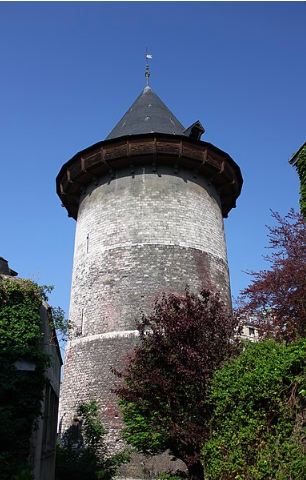

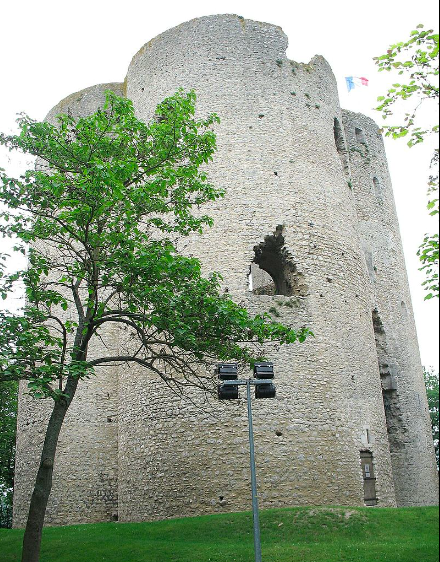
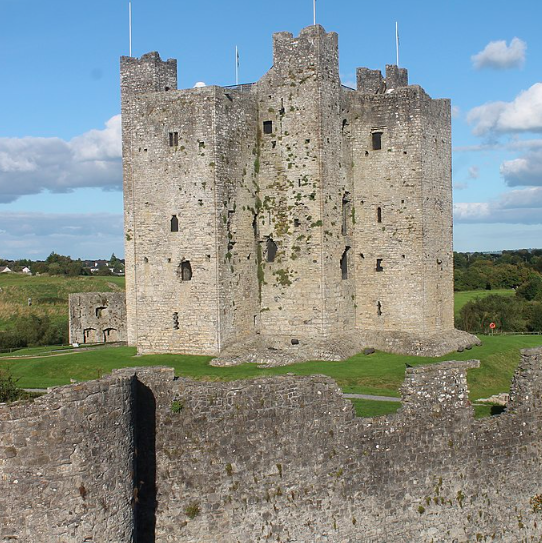
Stone Keep Castle History
The Emergence and Decline of the Design
History shows a few Stone Keep castles were built as early as the 11th century in Normandy; however, the use of the design is more seen from the mid-12th century on. Defense is the main reason people upgraded to stone from earlier designs. As weapons evolved, castle defense had to, creating the need for stone keeps.
Showing off their wealth was the second reason. Because Stone Keep castles are very expensive to build, only royalty and the wealthiest landowners could afford to build them. They are so expensive, in fact, that King Edward I of England almost went bankrupt building four new castles in Wales. He spent £100,000, roughly £73 million in today’s money (88.3 million USD).
With advanced weapons, Keep castles, regardless of their building material, did not offer enough protection. By the 15th century, Keeps disappeared.
Stone Keep Design: Pros and Cons
Pros
A big draw to the design is its sturdiness and ability to offer more protection against modern weapons such as catapults and siege engines1, than earlier designs. Not to mention, once a castle is built it will still be standing centuries later, lending to its owner’s legacy.
Cons
Unlike Motte and Bailey castles that were built by unskilled, and typically forced, labor, stone keep castles needed experienced stone masons and other tradesmen, who had to be paid. This made the design option very expensive.
Not only are stone keeps expensive, but they also take a long time to build—anywhere from five years to a decade or more – depending on the size of the castle.
Unexpected Benefits
Building a Stone Keep castle takes a lot of effort, regardless of its size.
To speed up the building process, many tools and techniques came out of this period, which is still used today.
One such tool is the wooden treadwheel crane.
This human-powered machine is used to hoist and lower large building materials, such as stone.

Modern scaffolds are a result of techniques and improvements from the Medieval era.
Stone Keep Castles Today
Many Stone Keep castles are still fully intact today.
France:
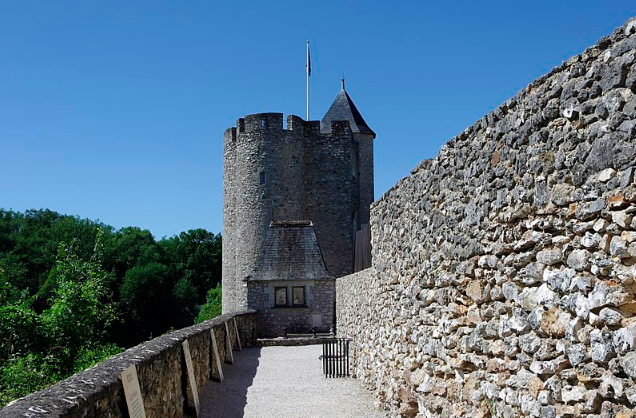

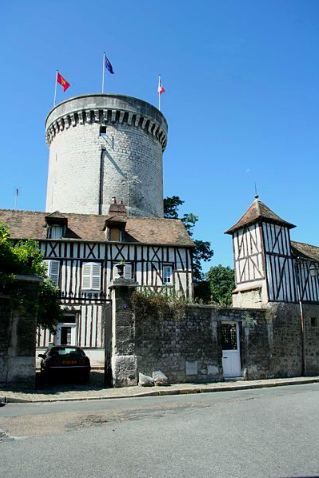
England:
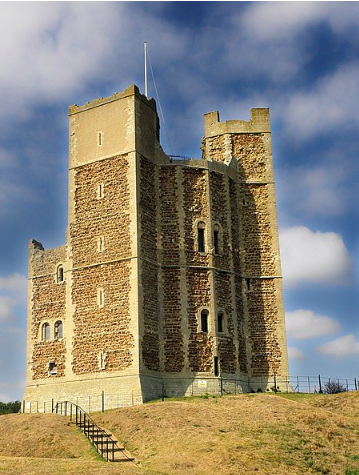
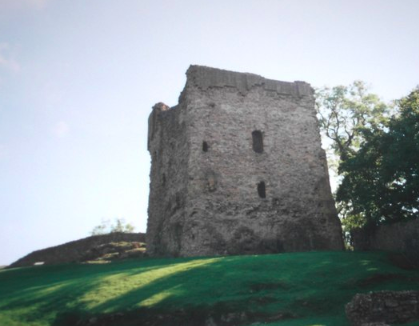
I hope you enjoyed learning about Stone Keep castles. Join us next time for Part 5 of the Medieval Castles series.
Notes
1 Siege engine – A device designed to break down heavy castle doors, city walls, or other fortifications. Can be mobile or immobile.
Image Credits
1 – Plan donjon chateau Rouen via commons.wikimedia.org.
2 – Goodrich castle Keep Plan via commons.wikimedia.org.
3 – Chateau D’Etampes Keep Plan via commons.wikimedia.org.
4 – Trim Keep Plan via commons.wikimedia.org.
5 – Rouen – Tour Jean D’Arc via commons.wikimedia.org.
6 – Goodrich castle via commons.wikimedia.org.
7 – Chateau D’Etampes castle via commons.wikimedia.org.
8 – Trim castle via commons.wikimedia.org.
9 – Treadwheel Crane via commons.wikimedia.org by Michael Coleman ©2011, Reconstruction of medieval building machines at La Roque Saint Christophe, Reconstruction of medieval building machines at La Roque S… | Flickr
10 – Chateau de Montbazon via commons.wikimedia.org by Daniel Jolivet ©2017
11 – Chateau de Gombervaux via commons.wikimedia.org.
12 – Tour des Archives via commons.wikimedia.org by Spedona ©2007
13 – Peveril Castle via commons.wikimedia.org by Darren Haddock / 11th Century Stone Keep / CC BY-SA 2.0
14 – Orford castle via commons.wikimedia.org by Keith Roper ©2009






